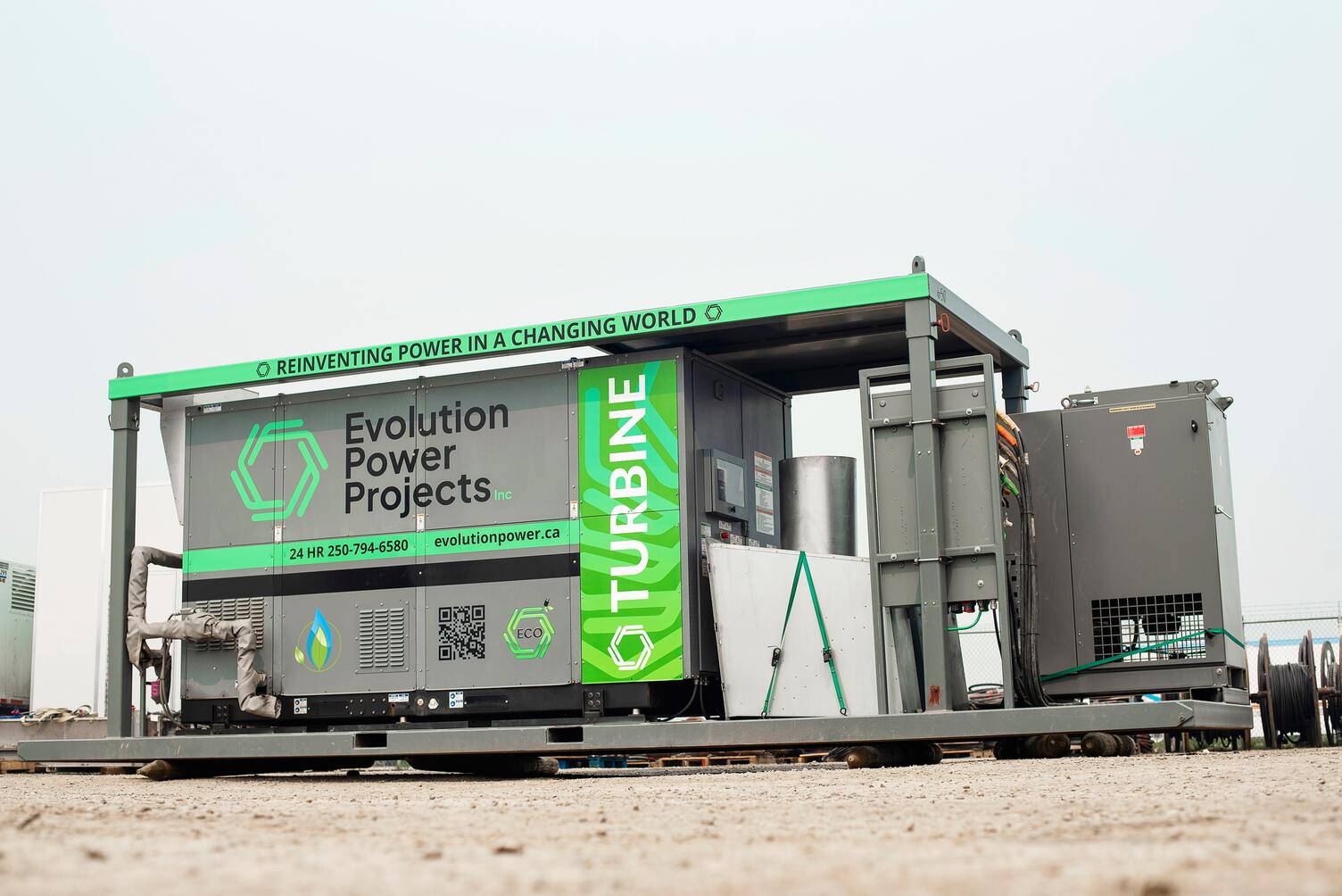Calgary, AB – The Pad Electrification era in the Canadian Energy sector has arrived. Operators now have the ability to electrify all of their surface equipment including shacks, lighting, wireline units, pumps, sand delivery systems, frack shacks, glycol heaters, boilers, datavans, and any other service that traditionally runs off diesel. The savings on diesel, trucking, generator rentals and maintenance are significant. It also lowers the Operator’s carbon footprint as well as emissions.
The Pad Electrification strategy includes utilizing fuel gas supplied turbines either individually or paired together to form a micro grid ranging from 200kw to 2.5MW of reliable power. Multiple third-party diesel generators can be displaced with one Evolution Power turbine. Power can be conveniently and safely distributed throughout site with a plug and play cabling and distribution system (referred to as the “Micro Grid”). The turbines, distribution panels, transfer switches, and cabling system are all incorporated into the site plan for ease of access and only require 5 hours of service per year. In water management applications, Operators are switching away from diesel power generation at primary water sources to power fracs and heat reservoirs, amongst other Upstream and Midstream uses.
A critical component to Pad Electrification success lies within the turbine fuel tolerances. Fuel gas (solution/well gas), natural gas, sales gas, west gas, dry gas, propane, and sour gas (up to 5,000 ppm H2S content) can be utilized to create power. Once the gas analysis is reviewed, a decision can be made whether treatment of the gas is needed. If gas treatment is needed, a Pressure Reduction Skid, Knock Out/Knock Down tank, or Vaporizer can be used. Pads can be electrified to power Drilling, Completion, Production, and Construction operations. For more information contact Michael.lawson@enterprisegrp.ca.
